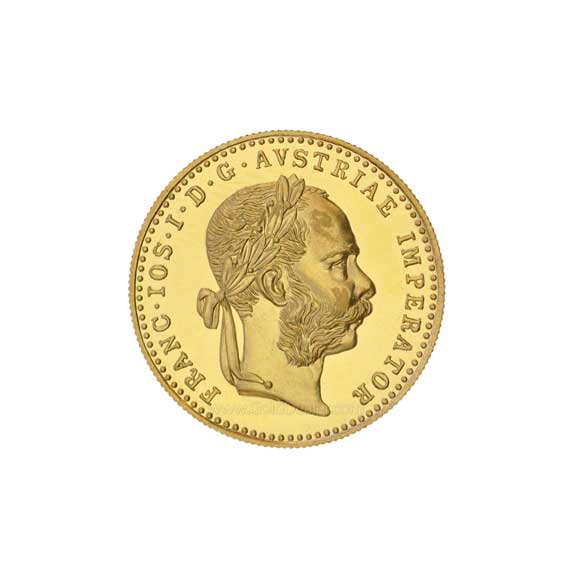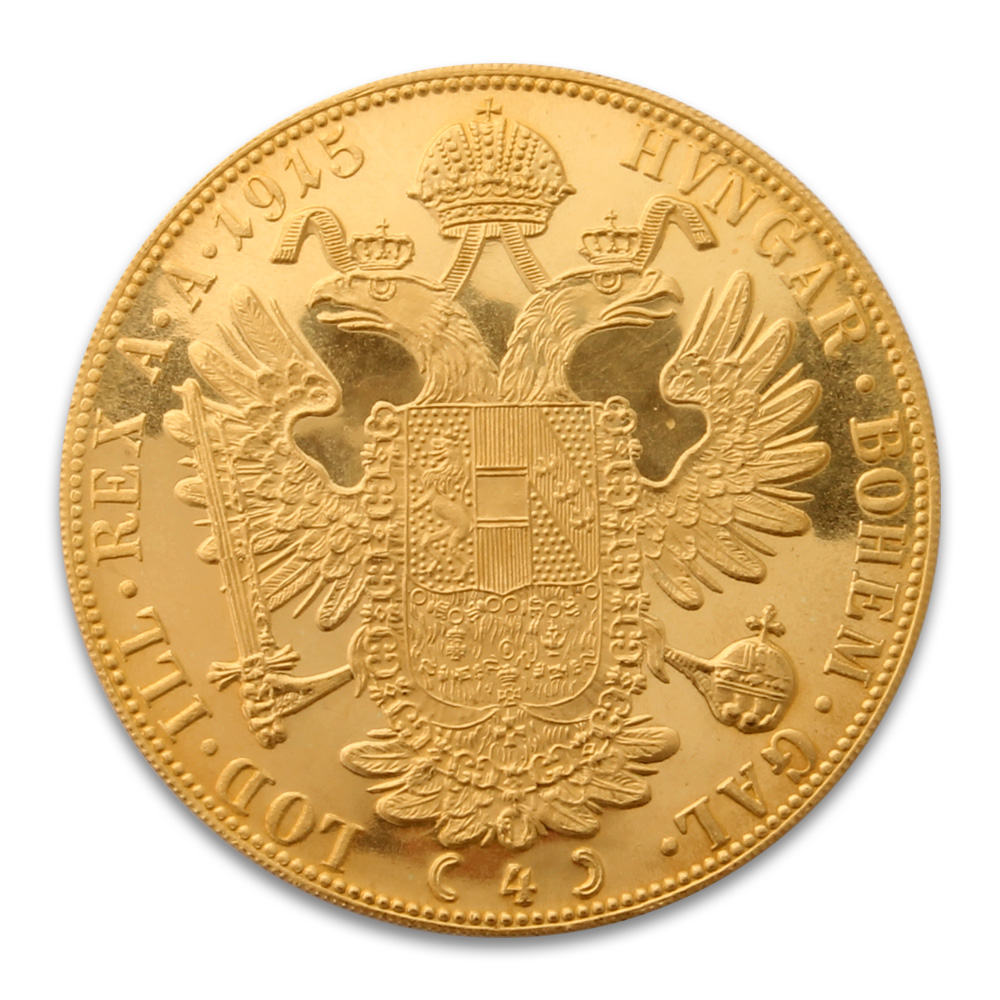

Gold Ducats
Ducat Gold Coins: Austrian Bullion With A Wealth of History
The Austrian Ducat is one of the world’s finest gold bullion coins. Steeped in history and tradition, these gold coins are highly popular with collectors, and boasting .1106 ounces of pure gold are an excellent investment tool.
Buying Ducat coins
You can buy Austrian Ducats from the CoinInvest online store for highly competitive rates. To purchase simply click on the coin of your choice from the selection above to take you to the product description page, then add to cart highlighted by the orange strip in the volume pricing table.
Ducat: the Austrian version of high purity Imperial gold bullion coins
Gold Ducats are first recorded as being issued by the Kingdom of Austria in 1612 although they probably surfaced much earlier. Austrian Ducats were produced with a high purity .986 fine gold (23.75 carats),making them among the highest purity gold coins to be issued for circulation prior to the late 20th Century. During the 1400s, international traders in Western Europe shifted from the florin to the ducat as their preferred currency and unit of account. The ducat was a gold or silver coin used as a trade coin in Europe from the later medieval centuries until as late as the 20th century. As rulers of Holland, Russia, Austria, Sweden and other countries reformed their currencies they most frequently used the silver Venetian Ducat as a model. Coinage reforms of The Holy Roman Emperor Maximilian initiated coinage of gold ducats in Austria as early as 1511. Around 1913, the gold Ducat was worth the equivalent of nine shillings and four pence. Austria continued to strike Ducats for circulation until 1914, during the last years of the reign of Franz Joseph I, and right before the start of World War I. Gold Ducat coins dated 1915 are still being produced by the Austrian Mint as official re-strikes, in Austrian tradition for posthumous commemorative coins. Franz Joseph I (18 August 1830 - 21 November 1916) was Emperor of Austria and Apostolic King of Hungary from December 1848, after Emperor Ferdinand’s abdication as part of Prince Felix zu Schwarzenberg's plan to end the Revolutions in Austria, and until his death in 1916. Franz Joseph was troubled by nationalism during his entire reign, and personally suffered the tragedies of the execution of his brother, Maximilian, the suicide of his son, Crown Prince Rudolf in 1889, and the assassination of his wife, Empress Elisabeth in 1898. On 28 June 1914, the assassination of the heir-presumptive to the Austro-Hungarian throne, his nephew Archduke Franz Ferdinand, from the hands of Serbian nationalist Gavrilo Princip resulted in Austria-Hungary's declaration of war against the Kingdom of Serbia (one of Russia's allies) activating a series of alliances which resulted in World War I. A very rare gold Ducat issue was decreed on July 21, 1766 after the death of Francis I. Keeping faith in tradition, his widow, Maria Theresa, determined that coins would be issued bearing the portrait of Francis I and the date of his death. Alphabetical mintmarks were to be used to denote the actual year of issue, with A for 1766. The posthumous coins were issued erratically.
Ducat description
Gold Ducats have inherited their design and appearance from the medieval gold coins of Europe, as they are quite thin (at just 0.8 mm) when compared with modern gold coins, but large (20mm in diameter). They weigh 3.44 g. and contain 98.6 % pure gold, the balance being in silver. On the obverse side we find a head portrait of the Emperor of Austria, the last being Franz Josef I. There are versions with a younger portrait, but a more mature one is on the latest coins, including the 1915 issue. The Emperor is facing right, he is bearded with a thick moustache, and wearing a laurel wreath on his head. The words FRANC IOS I D G AUSTRIAE IMPERATOR are inscribed. On the reverse we see the arms of Austria overlaid upon a crowned double-headed Imperial eagle. The coat of arms of Austria-Hungary was that country's symbol during its existence from 1867 to 1918 when the empire collapsed as a result of defeat in World War I. The double-headed eagle or Imperial Eagle was originally a symbol of the Holy Roman Empire. Above the Imperial Eagle is the Imperial Crown worn by Holy Roman Emperors from the House of Habsburg, becoming the crown of Austria after the dissolution of the Holy Roman Empire. The Imperial Eagle holds the Imperial Regalia or the crown jewels atop of its heads, the Imperial Sword, which was used during coronations, and the Imperial Orb, a symbol of divine right. The double-headed eagle is a common symbol in heraldry, most commonly associated with the Byzantine Empire, the Holy Roman Empire, the Russian Empire and their successor states. In Byzantine heraldry, the heads represent the Emperor having authority over both secular and religious matters, and facing both East and West for friend of foe. Inscribed we find the words HUNGAR BOHEM GAL LOD ILL REX A A, together with the year of issue.
The production of the Ducat coins
The Austrian Mint has been producing innovative coinage and currency for over 800 years, making it one of the oldest continuously-producing minting institutions in the world. It carries out both the design and minting of the coins it produces. When, in 1194, Richard the Lionheart paid 12 tonnes of silver as ransom to Duke Leopold V of Austria, he not only secured his freedom from a year of incarceration, but also unwittingly laid the foundations of the Austrian Mint. The gold Ducat beautifully crafted coins minted in the very heart of Vienna are highly sought after by investors and collectors all over the world, as well as by those simply looking for a worthy and suitable gift for a loved one.
The Austrian Mint Quality Assurance
These extremely impressive, delicate gold coins, issued by one of the oldest and finest mints in the world, are sought after by collectors both for their exceptional design and their high purity in fine gold. Coins that were in circulation fetch high prices, depending on their condition, while the 1915 re-strikes also serve commemorative purposes as they are twinned with the history of the Austria-Hungary Empire.
Selling Ducat coins
CoinInvest is interested in hearing from anybody with Ducat gold coins for sale. We offer highly competitive rates in line with current market spot prices so if you are interested in selling your Austrian Ducats contact a member of our friendly staff who will prepare an offer and confirm the same by email.
-